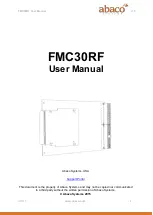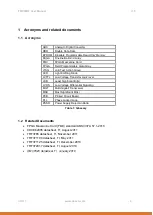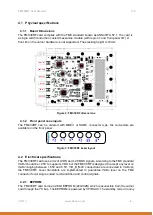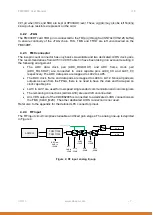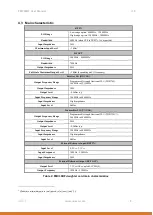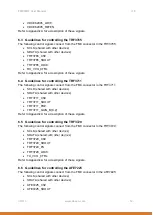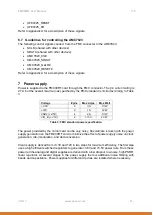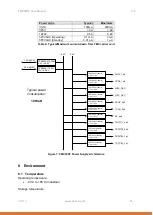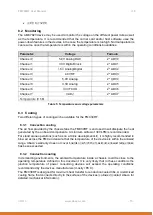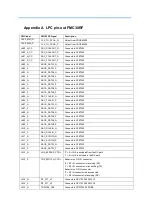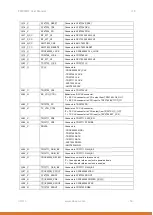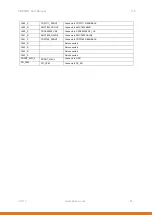
FMC30RF User Manual
r1.3
UM015
- 15 -
•
-40
°
C to +120
°
C
8.2 Monitoring
The AMC7823 device may be used to monitor the voltage on the different power rails as well
as the temperature. It is recommended that the carrier card and/or host software uses the
power-down features in the devices in the case the temperature is too high. Normal operations
can resume once the temperature is within the operating conditions boundaries.
Parameter:
Voltage
Formula
Channel 0
5.0V Analog DAC
2 * ADC0
Channel 1
3.3V Digital/Clock
2 * ADC1
Channel 2
1.8V Analog/Digital
2 * ADC2
Channel 3
4.0V RF
2 * ADC3
Channel 4
5.0V Analog
2 * ADC4
Channel 5
3.3V Analog
2 * ADC5
Channel 6
3.3V TCXO
2 * ADC6
Channel 7
VADJ
2 * ADC7
Temperature (Ch 8)
Table 5: Temperature and voltage parameters
8.3 Cooling
Two different types of cooling will be available for the FMC30RF.
8.3.1 Convection cooling
The air flow provided by the chassis fans the FMC30RF is enclosed in will dissipate the heat
generated by the on board components. A minimum airflow of 300 LFM is recommended.
For stand alone operations (such as on a Xilinx development kit), it is highly recommended to
blow air across the FMC and ensure that the temperature of the devices is within the allowed
range. Abaco’s warranty does not cover boards on which the maximum allowed temperature
has been exceeded.
8.3.2 Conduction cooling
In demanding environments, the ambient temperature inside a chassis could be close to the
operating temperature defined in this document. It is very likely that in these conditions the
junction temperature of power consuming devices will exceed the operating conditions
recommended by the devices manufacturers (85
°
C).
The FMC30RF is designed for maximum heat transfer to conduction cooled ribs. A customized
cooling frame that connects directly to the surface of the devices is allowed (contact Abaco for
detailed mechanical information).

